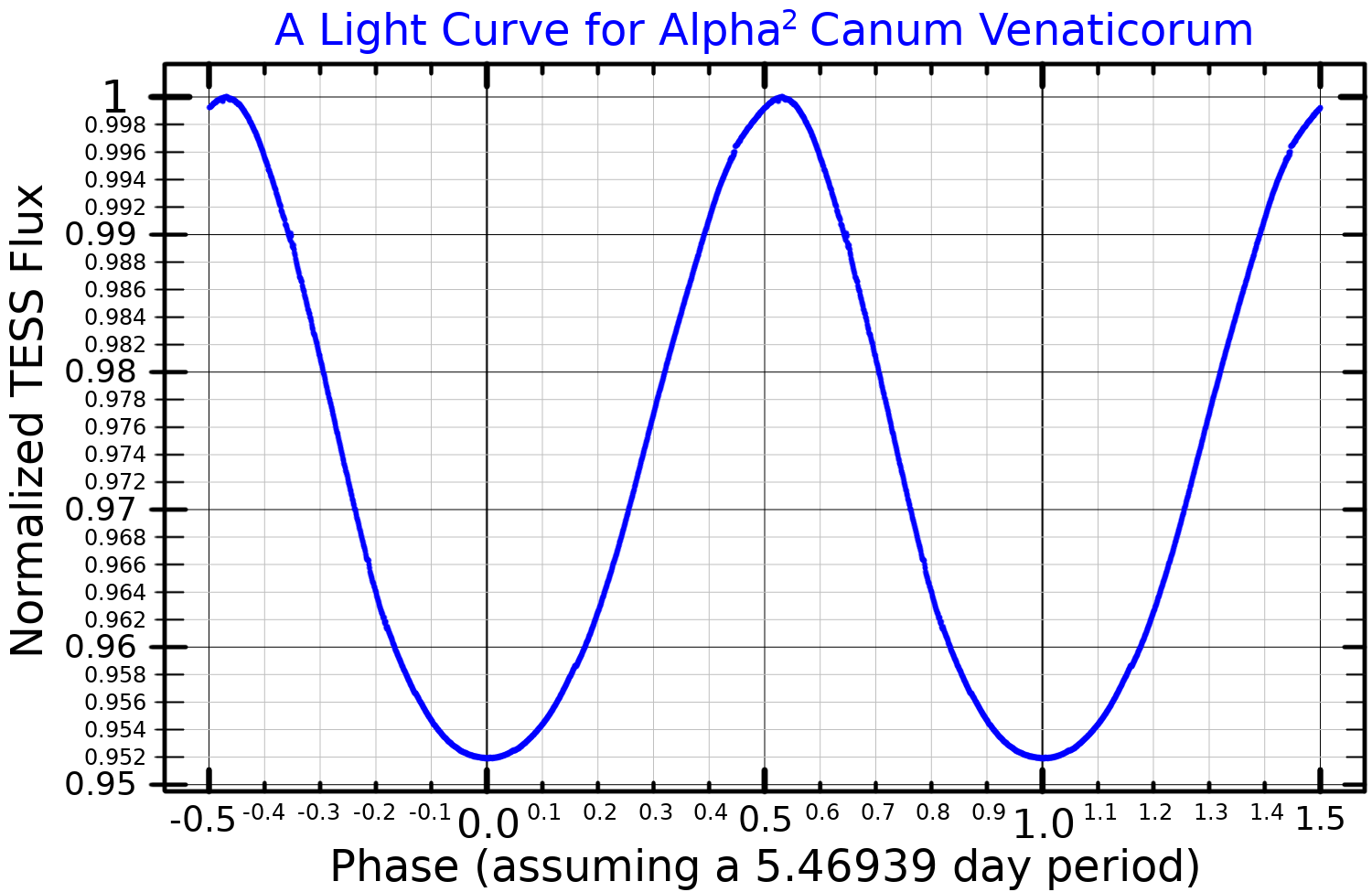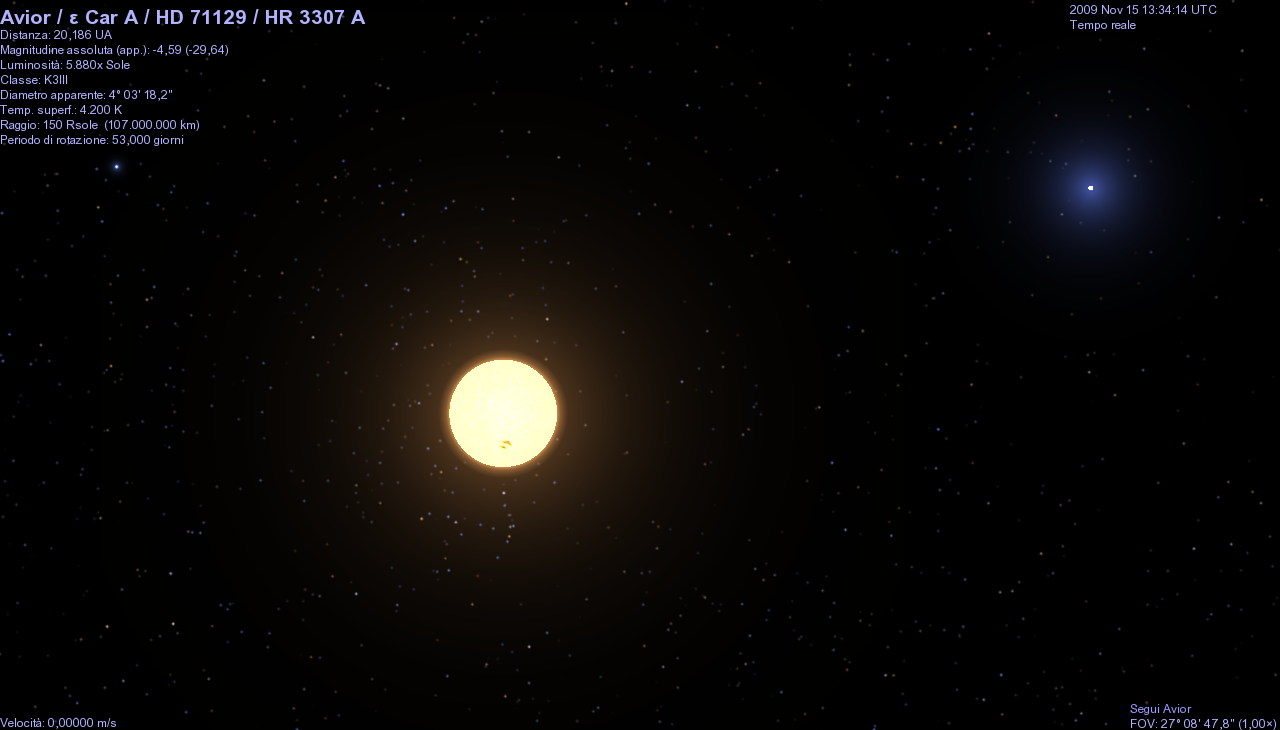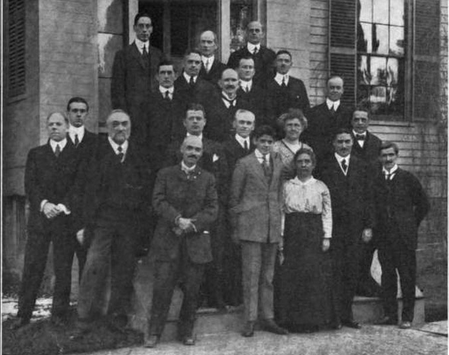|
BN Camelopardalis
BN Camelopardalis is a suspected astrometric binary in the northern circumpolar constellation of Camelopardalis. It appears as a variable star that is visible to the naked eye as a dim, white-hued point of light with an apparent visual magnitude that fluctuates around 5.49. The system is located at a distance of around 310 light years from the Sun based on parallax, and is drifting further away with a radial velocity of +9 km/s. The visible component is a weakly magnetic chemically peculiar star with a stellar classification of B9.5VpSi, matching a B-type main-sequence star with an anomalous abundance of silicon. It is a variable star that ranges in brightness from 5.34 down to 5.58. Samus et al. (2017) have it categorized as an α2 Canum Venaticorum variable with a period of 2.7347 days, while Adelman and Sutton (2007) found a period of 2.73501 days. The star has three times the mass and radius of the Sun and is radiating 110 times the Sun's lum ... [...More Info...] [...Related Items...] OR: [Wikipedia] [Google] [Baidu] |
Stellar Classification
In astronomy, stellar classification is the classification of stars based on their spectral characteristics. Electromagnetic radiation from the star is analyzed by splitting it with a prism or diffraction grating into a spectrum exhibiting the rainbow of colors interspersed with spectral lines. Each line indicates a particular chemical element or molecule, with the line strength indicating the abundance of that element. The strengths of the different spectral lines vary mainly due to the temperature of the photosphere, although in some cases there are true abundance differences. The ''spectral class'' of a star is a short code primarily summarizing the ionization state, giving an objective measure of the photosphere's temperature. Most stars are currently classified under the Morgan–Keenan (MK) system using the letters ''O'', ''B'', ''A'', ''F'', ''G'', ''K'', and ''M'', a sequence from the hottest (''O'' type) to the coolest (''M'' type). Each letter class is then subdivi ... [...More Info...] [...Related Items...] OR: [Wikipedia] [Google] [Baidu] |
Hipparcos Objects
''Hipparcos'' was a scientific satellite of the European Space Agency (ESA), launched in 1989 and operated until 1993. It was the first space experiment devoted to precision astrometry, the accurate measurement of the positions of celestial objects on the sky. This permitted the first high-precision measurements of the intrinsic brightnesses (compared to the less precise apparent brightness), proper motions, and parallaxes of stars, enabling better calculations of their distance and tangential velocity. When combined with radial velocity measurements from spectroscopy, astrophysicists were able to finally measure all six quantities needed to determine the motion of stars. The resulting ''Hipparcos Catalogue'', a high-precision catalogue of more than 118,200 stars, was published in 1997. The lower-precision ''Tycho Catalogue'' of more than a million stars was published at the same time, while the enhanced Tycho-2 Catalogue of 2.5 million stars was published in 2000. ''Hipp ... [...More Info...] [...Related Items...] OR: [Wikipedia] [Google] [Baidu] |
Henry Draper Catalogue Objects
Henry may refer to: People *Henry (given name) *Henry (surname) * Henry Lau, Canadian singer and musician who performs under the mononym Henry Royalty * Portuguese royalty ** King-Cardinal Henry, King of Portugal ** Henry, Count of Portugal, Henry of Burgundy, Count of Portugal (father of Portugal's first king) ** Prince Henry the Navigator, Infante of Portugal ** Infante Henrique, Duke of Coimbra (born 1949), the sixth in line to Portuguese throne * King of Germany **Henry the Fowler (876–936), first king of Germany * King of Scots (in name, at least) ** Henry Stuart, Lord Darnley (1545/6–1567), consort of Mary, queen of Scots ** Henry Benedict Stuart, the 'Cardinal Duke of York', brother of Bonnie Prince Charlie, who was hailed by Jacobites as Henry IX * Four kings of Castile: **Henry I of Castile **Henry II of Castile **Henry III of Castile **Henry IV of Castile * Five kings of France, spelt ''Henri'' in Modern French since the Renaissance to italianize the name and to ... [...More Info...] [...Related Items...] OR: [Wikipedia] [Google] [Baidu] |
Durchmusterung Objects
In astronomy, Durchmusterung or Bonner Durchmusterung (BD) is an astrometric star catalogue of the whole sky, compiled by the Bonn Observatory in Germany from 1859 to 1903. The name comes from ('run-through examination'), a German word used for a systematic survey of objects or data. The term has sometimes been used for other astronomical surveys, including not only stars, but also the search for other celestial objects. Special tasks include celestial scanning in electromagnetic wavelengths shorter or longer than visible light waves. Original catalog The 44 years of work on the Bonner Durchmusterung (abbreviated BD), initiated by Friedrich Argelander and largely carried out by his assistants, resulted in a catalogue of the positions and apparent magnitudes of approximately 325,000 stars to apparent magnitude 9–10. The catalogue was accompanied by charts plotting the positions of the stars, and was the basis for the ''Astronomische Gesellschaft Katalog'' (AGK) and '' Smith ... [...More Info...] [...Related Items...] OR: [Wikipedia] [Google] [Baidu] |
Alpha2 Canum Venaticorum Variables
An Alpha2 Canum Venaticorum variable (or α2 CVn variable) is a type of variable star. These stars are chemically peculiar main sequence stars of spectral class B8p to A7p. They have strong magnetic fields and strong silicon, strontium, or chromium spectral lines. Their brightness typically varies by 0.01 to 0.1 magnitudes over the course of 0.5 to 160 days. In addition to their intensities, the intensities and profiles of the spectral lines of α2 CVn variables also vary, as do their magnetic fields. The periods of these variations are all equal and are believed to equal the period of rotation of the star. It is thought that they are caused by an inhomogeneous distribution of metals in the atmospheres of these stars, so that the surface of the star varies in brightness from point to point. The type-star which this class is named after is α² Canum Venaticorum, a star in the binary system of Cor Caroli, which is in the northern constellation of Canes Venatici Canes Ven ... [...More Info...] [...Related Items...] OR: [Wikipedia] [Google] [Baidu] |
B-type Main-sequence Stars
A B-type main-sequence star (B V) is a main-sequence (hydrogen-burning) star of spectral type B and luminosity class V. These stars have from 2 to 16 times the mass of the Sun and surface temperatures between 10,000 and 30,000 K. B-type stars are extremely luminous and blue. Their spectra have neutral helium, which are most prominent at the B2 subclass, and moderate hydrogen lines. Examples include Regulus and Algol A. This class of stars was introduced with the Harvard sequence of stellar spectra and published in the ''Revised Harvard photometry'' catalogue. The definition of type B-type stars was the presence of non- ionized helium lines with the absence of singly ionized helium in the blue-violet portion of the spectrum. All of the spectral classes, including the B type, were subdivided with a numerical suffix that indicated the degree to which they approached the next classification. Thus B2 is 1/5 of the way from type B (or B0) to type A. Later, however, more refined ... [...More Info...] [...Related Items...] OR: [Wikipedia] [Google] [Baidu] |
American Association Of Variable Star Observers
The American Association of Variable Star Observers (AAVSO) is an international nonprofit organization, founded in 1911, focused on coordinating, analyzing, publishing, and archiving variable star observations made largely by amateur astronomers. The AAVSO creates records that establish light curves depicting the variation in brightness of a star over time, and makes them available to professional astronomers, researchers, and educators. Since professional astronomers do not have the time or the resources to monitor every variable star, astronomy is one of the few sciences where amateurs can make genuine contributions to scientific research. During 2011, the 100th year of the AAVSO's existence, the 20-millionth variable star observation was received into the database. The AAVSO International Database (AID) stores over 35 million observations as of 2019. The organization receives nearly 1,000,000 observations annually from around 2,000 professional and amateur observers and is q ... [...More Info...] [...Related Items...] OR: [Wikipedia] [Google] [Baidu] |
Monthly Notices Of The Royal Astronomical Society
''Monthly Notices of the Royal Astronomical Society'' (MNRAS) is a peer-reviewed scientific journal covering research in astronomy and astrophysics. It has been in continuous existence since 1827 and publishes letters and papers reporting original research in relevant fields. Despite the name, the journal is no longer monthly, nor does it carry the notices of the Royal Astronomical Society. History The first issue of MNRAS was published on 9 February 1827 as ''Monthly Notices of the Astronomical Society of London'' and it has been in continuous publication ever since. It took its current name from the second volume, after the Astronomical Society of London became the Royal Astronomical Society (RAS). Until 1960 it carried the monthly notices of the RAS, at which time these were transferred to the newly established '' Quarterly Journal of the Royal Astronomical Society'' (1960–1996) and then to its successor journal '' Astronomy & Geophysics'' (since 1997). Until 1965, MNRAS wa ... [...More Info...] [...Related Items...] OR: [Wikipedia] [Google] [Baidu] |
Effective Temperature
The effective temperature of a body such as a star or planet is the temperature of a black body that would emit the same total amount of electromagnetic radiation. Effective temperature is often used as an estimate of a body's surface temperature when the body's emissivity curve (as a function of wavelength) is not known. When the star's or planet's net emissivity in the relevant wavelength band is less than unity (less than that of a black body), the actual temperature of the body will be higher than the effective temperature. The net emissivity may be low due to surface or atmospheric properties, including greenhouse effect. Star The effective temperature of a star is the temperature of a black body with the same luminosity per ''surface area'' () as the star and is defined according to the Stefan–Boltzmann law . Notice that the total ( bolometric) luminosity of a star is then , where is the stellar radius. The definition of the stellar radius is obviously not stra ... [...More Info...] [...Related Items...] OR: [Wikipedia] [Google] [Baidu] |
Photosphere
The photosphere is a star's outer shell from which light is radiated. The term itself is derived from Ancient Greek roots, φῶς, φωτός/''phos, photos'' meaning "light" and σφαῖρα/''sphaira'' meaning "sphere", in reference to it being a spherical surface that is perceived to emit light. It extends into a star's surface until the plasma becomes opaque, equivalent to an optical depth of approximately , or equivalently, a depth from which 50% of light will escape without being scattered. A photosphere is the deepest region of a luminous object, usually a star, that is transparent to photons of certain wavelengths. Temperature The surface of a star is defined to have a temperature given by the effective temperature in the Stefan–Boltzmann law. Stars, except neutron stars, have no solid or liquid surface. Therefore, the photosphere is typically used to describe the Sun's or another star's visual surface. Composition of the Sun The Sun is composed primari ... [...More Info...] [...Related Items...] OR: [Wikipedia] [Google] [Baidu] |




